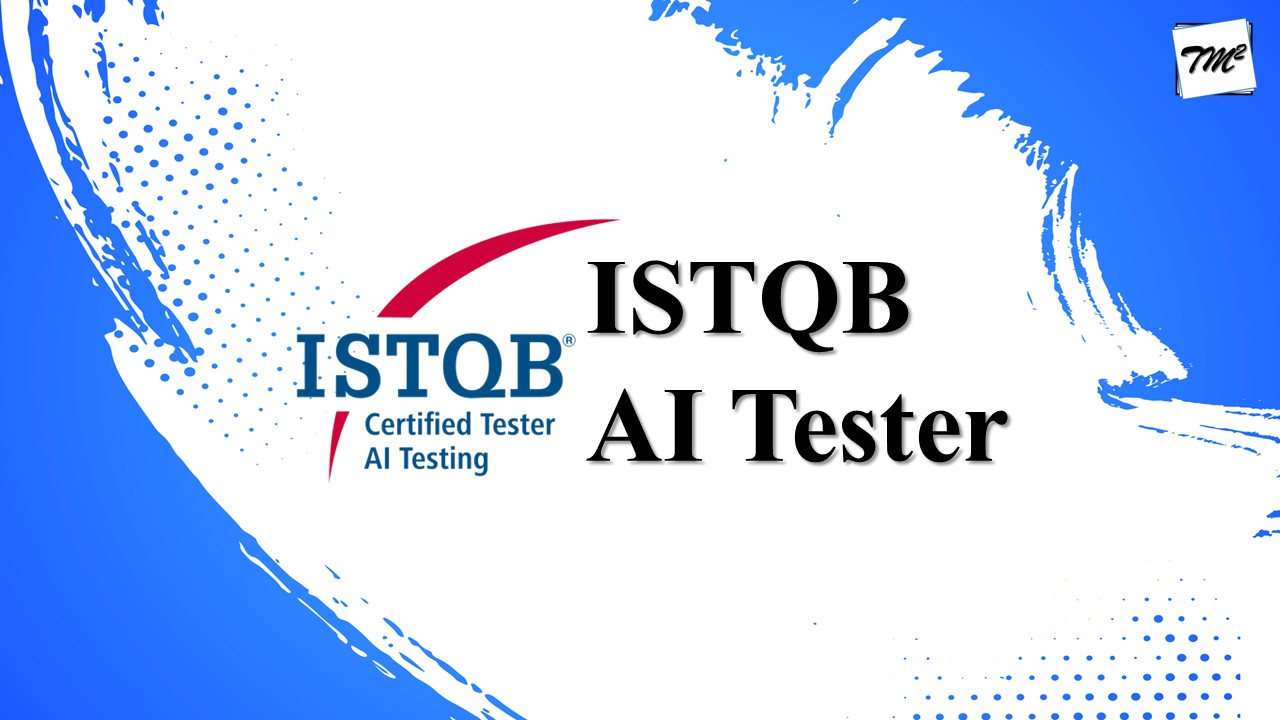AI training for testers can equip them with the knowledge and skills to effectively test AI-powered systems and leverage AI to enhance the testing process. This includes understanding AI concepts, testing methodologies, and using AI-powered tools.
This includes understanding AI concepts, testing methodologies, challenges of Testing an AI Based system and using AI-powered tools.

ISTQB AI Testing certification is a career must-have for everyone who may test AI-based systems or is using AI for testing. You need to future-proof your career and your organization with AI Testing certification. ISTQB AI Testing certification is critical for the careers of not just testers, but also test analysts, data analysts, test engineers, test consultants, test managers, user acceptance testers, and software developers.
This certification is also important for anyone who wants a basic understanding of testing AI-based systems or will be using AI for testing, such as project managers, quality managers, software development managers, business analysts, operations team members, IT directors, and management consultants.
Participants must be ISTQB Foundation level certified for ISTQB AI Certification
-> Definition of AI and AI Effect
-> Narrow, General and Super AI
-> AI-Based and Conventional Systems
-> AI Technologies
-> AI Development Frameworks
-> Hardware for AI-Based Systems
-> AI as a Service (AIaaS)
• Contracts for AI as a Service
• AIaaS Examples
-> Pre-Trained Models
• Introduction to Pre-Trained Models
• Transfer Learning
• Risks of using Pre-Trained Models and Transfer Learning
-> Standards, Regulations and AI
-> Flexibility and Adaptability
-> Autonomy
-> Evolution
-> Bias
-> Ethics
-> Side Effects and Reward Hacking
-> Transparency, Interpretability and Explainability
-> Safety and AI
-> Forms of ML
• Supervised Learning
• Unsupervised Learning
• Reinforcement Learning
-> ML Workflow
-> Selecting a Form of ML
-> Factors Involved in ML Algorithm Selection
-> Overfitting and Underfitting
• Overfitting
• Underfitting
-> Data Preparation as Part of the ML Workflow
• Challenges in Data Preparation
• Hands-On Exercise: Data Preparation for ML
-> Training, Validation and Test Datasets in the ML Workflow
-> Dataset Quality Issues
-> Data Quality and its Effect on the ML Model
-> Data Labelling for Supervised Learning
• Approaches to Data Labelling
• Mislabeled Data in Datasets
-> Confusion Matrix
-> Additional ML Functional Performance Metrics for Classification, Regression and Clustering
-> Limitations of ML Functional Performance Metrics
-> Selecting ML Functional Performance Metrics
-> Benchmark Suites for ML
-> Neural Networks
-> Coverage Measures for Neural Networks
-> Specification of AI-Based Systems
-> Test Levels for AI-Based Systems
• Input Data Testing
• ML Model Testing
• Component Testing
• Component Integration Testing
• System Testing
• Acceptance Testing
-> Test Data for Testing AI-based Systems
-> Testing for Automation Bias in AI-Based Systems
-> Documenting an AI Component
-> Testing for Concept Drift
-> Selecting a Test Approach for an ML System
-> Challenges Testing Self-Learning Systems
-> Testing Autonomous AI-Based Systems
-> Testing for Algorithmic, Sample and Inappropriate Bias
-> Challenges Testing Probabilistic and Non-Deterministic AI-Based Systems
-> Challenges Testing Complex AI-Based Systems
-> Testing the Transparency, Interpretability and Explainability of AI-Based Systems
-> Test Oracles for AI-Based Systems
-> Test Objectives and Acceptance Criteria
-> Adversarial Attacks and Data Poisoning
• Adversarial Attacks
• Data Poisoning
-> Pairwise Testing
• Hands-On Exercise: Pairwise Testing
-> Back-to-Back Testing
-> A/B Testing
-> Metamorphic Testing (MT)
-> Experience-Based Testing of AI-Based Systems
-> Selecting Test Techniques for AI-Based Systems
-> Test Environments for AI-Based Systems
-> Virtual Test Environments for Testing AI-Based Systems
-> AI Technologies for Testing
• Hands-On Exercise: The Use of AI in Testing
-> Using AI to Analyze Reported Defects
-> Using AI for Test Case Generation
-> Using AI for the Optimization of Regression Test Suites
-> Using AI for Defect Prediction
• Hands-On Exercise: Build a Defect Prediction System
-> Using AI for Testing User Interfaces
• Using AI to Test Through the Graphical User Interface (GUI)
-> Using AI to Test the GUI